Trains, Literature, and Culture
Reading/Writing The Rails
Steven D. Spalding Benjamin Fraser
Lexington Books
Lanham Boulder New York Toronto Plymouth, UK
Published by Lexington Books
A wholly owned subsidiary of The Rowman & Littlefield Publishing Group, Inc.
4501 Forbes Boulevard, Suite 200, Lanham, Maryland 20706
www.lexingtonbooks.com
Estover Road, Plymouth PL6 7PY, United Kingdom
Copyright 2012 by Lexington Books
All rights reserved . No part of this book may be reproduced in any form or by any electronic or mechanical means, including information storage and retrieval systems, without written permission from the publisher, except by a reviewer who may quote passages in a review.
British Library Cataloguing in Publication Information Available
Library of Congress Cataloging-in-Publication Data
Trains, literature, and culture : reading and writing the rails / edited by Steven D. Spalding and Benjamin Fraser
p. cm.
Summary: Trains, literature and culture is the first work to thoroughly explore the railroads connections with a full range of cultural discoursesincluding literature, visual art, music, graffiti, and television but also advertising, architecture, cell phones, and more... Provided by publisher.
ISBN 978-0-7391-6560-7 (hardback) ISBN 978-0-7391-6562-1 (electronic)
1. Railroads in literature. 2. Literature19th centuryHistory and criticism. 3. Literature20th century--History and criticism. 4. Literature and technologyHistory. 5. RailroadsSocial aspects. I. Spalding, Steven D., 1971- II. Fraser, Benjamin.
PN56.R22T73 2011
700 ' .4558dc23 2011044516
 The paper used in this publication meets the minimum requirements of American National Standard for Information SciencesPermanence of Paper for Printed Library Materials, ANSI/NISO Z39.48-1992.
The paper used in this publication meets the minimum requirements of American National Standard for Information SciencesPermanence of Paper for Printed Library Materials, ANSI/NISO Z39.48-1992.
Printed in the United States of America
Acknowledgments
The editors would like to thank Christopher Newport University for providing funding for the publication costs of this volume. Provost Mark Padilla, Dean Steven Breese, and Jana Adamitis (chair of modern and classical languages and literatures) have extended generous support to this project. Thanks also to the copyright holders of images included in this volume, in particular, the Oregon Historical Society for the images in chapter 5 and the National Railway Museum/Science and Society Picture Library (and Ed Bartholomew) for the images in chapter 6.
Steven D. Spalding would to thank like the former students from Oberlin College and Connecticut College who undertook early forays with him into the themes that brought him to this book project with indulgence, intelligence, generosity of spirit, and enthusiasm. Many thanks are owed Ben for his endless patience and wisdom and Karine and Eva for lighting up the days.
Benjamin Fraser would particularly like to thank Megan and Doug for the gift of the train graffiti zines (mentioned briefly in chapter 2), Steven for the lively conversations on trains and mobility, and Abby for fond memories of the journey to Whistler.
Introduction
Trains, Literature and Culture
Reading/Writing the Rails
Steven D. Spalding and Benjamin Fraser
Together with its companion volume ( Trains, Culture, and Mobility: Riding the Rails ), this two-book collection is the very first to capitalize on a growing interest in trains, subways, and metros from a broad spectrum of scholarly disciplines. The essays included in both books touch upon a wide variety of geographical areas from the United States, Europe, Africa, Asia, and Latin America. The contributors have departed from previous work that envisioned the train in terms of technological history and transportation issues (e.g., DeStefanis) in order to consider train travel from perspectives grounded in cultural analysis. These studies blend cultural, historical, and theoretical concerns, incorporating perspectives from sociology, economics, anthropology, media studies, among others, and are perhaps best described in terms of the burgeoning interdisciplinary field of mobility studies. Anchored by the creation of the journal Mobility Studies in 2006 and the new Center for Mobility Studies at Drexel University in Philadelphia, this forming area of scholarship argues for an approach that prioritizes shifting relations over static objects, calling for research that encompasses both large scale movements of people, objects, capital and information across the world, as well as the more local processes of daily transportation, movement through public space and the travel of material things within everyday life (Hannam, Sheller and Urry 1).
The recent interest in mobility studies has its roots in an intellectual tradition that sees modernity itself in terms of movement. Numerous nineteenth- and twentieth-century figures highlighted the mobile nature of modern life, for example, Karl Marxs The Communist Manifesto (1848), Charles Baudelaires The Painter of Modern Life (1872), Marshall Bermans All that is Solid Melts into Air (1982), and Zygmunt Baumans Liquid Modernity (2000). In many cases, the essays in these two books draw upon a tradition of specifically urban thought that sees the city itself as the most visible manifestation of this modern mobility, for instance, Georg Simmels The Metropolis and Mental Life (1903), Walter Benjamins The Arcades Project (1999), Michel de Certeaus The Practice of Everyday Life (1984), and numerous texts by Henri Lefebvre and contemporary Lefebvrian theorists David Harvey and Spaniard Manuel Delgado Ruiz.
In tandem with these and other perspectives on the mobile nature of modern life, the essays of this volume provide multiple ways of reading train travel through concrete case studies, in each case bridging theoretical concerns with one or more areas of cultural production. Whether one looks at the nineteenth-century railway or twentieth-century urban subway/metro, train travel has provided a mobile experience of modern realities that were themselves subject to constant change and even rupture. Through literary and visual representations, artists have imagined the train as a contradictory symbol of both modern anxiety and potential freedom. Furthermore, the spaces associated with trains have increasingly become a privileged object of attention as the projects of urban planners and political regimes have sought to control their populations. Moreover, the spaces of train travel are of interest to other perspectives, such as feminism and even network theory. As the essays in these volumes make clear, trains are an expression of the cultural project of modernity and suggest fertile interdisciplinary connections with literary criticism, photography, urban planning, visual art and graffiti, cinema and media studies, and popular culture, as well as with topics such as tourism, immigration, communication technology, consumerism, and education.
***
In particular, the contributions to this first book delve into the rich connections between rail travel and the creation of cultural products from short stories to novels, from photographs to travel guides, and from artistic manifestos of avant-garde poetry to Freuds psychology. Understood since Bakhtin as the hybridized terrain of concurrent and competing discourses, literary and visual texts have in criticisms late- and post-structuralist paradigms been reassessed in newly cultural terms. In clear echo of the cultural turn, the essays here bridge its concerns with those of mobility studies by demonstrating the centrality of mobility to literary and visual modernity in cultures the world over. Each contribution engages in critical readings of textual or visual representations of trains across a wide spectrum of time periods and traditionsfrom English and American to Mexican, West African, and European literary cultures. By turns trope, metaphor, and emblem of technological progress and its costs, these textual and visual representations of the train serve at times to index racial and gender inequalities to herald the arrival of a nations independence and at still others to evince the trauma of industrialization. In each instance, the figure of the train emerges as a complex narrative form engaged by artists who were Reading and Writing the Rails as a way of assessing the competing discursive investments of cultural modernity.
Next page
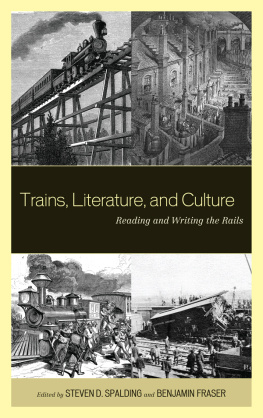

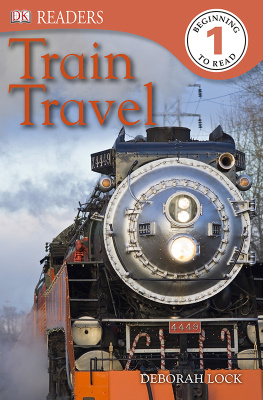
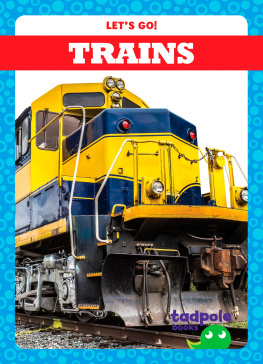
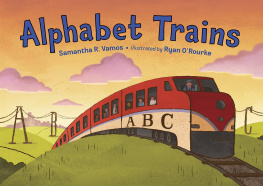
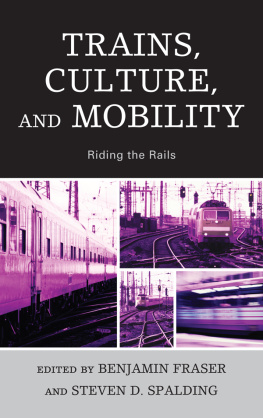
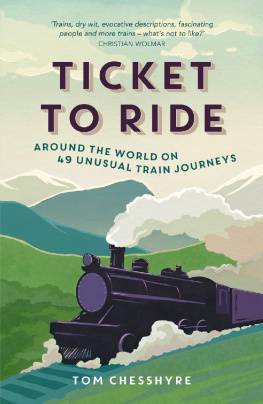
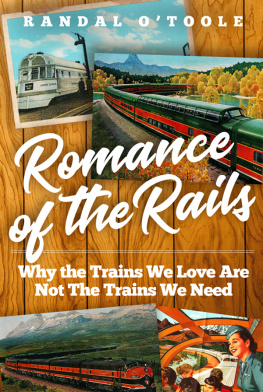
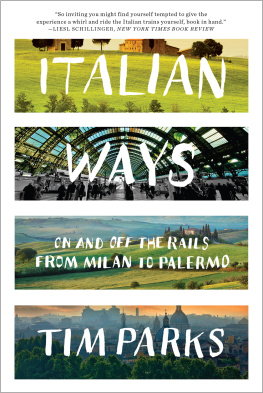
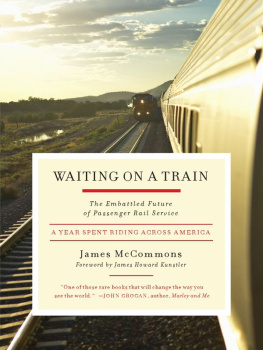
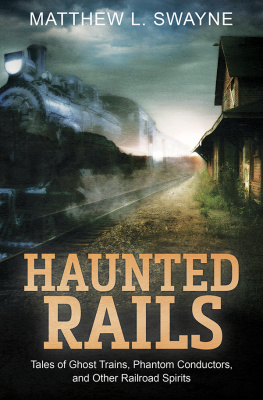

 The paper used in this publication meets the minimum requirements of American National Standard for Information SciencesPermanence of Paper for Printed Library Materials, ANSI/NISO Z39.48-1992.
The paper used in this publication meets the minimum requirements of American National Standard for Information SciencesPermanence of Paper for Printed Library Materials, ANSI/NISO Z39.48-1992.